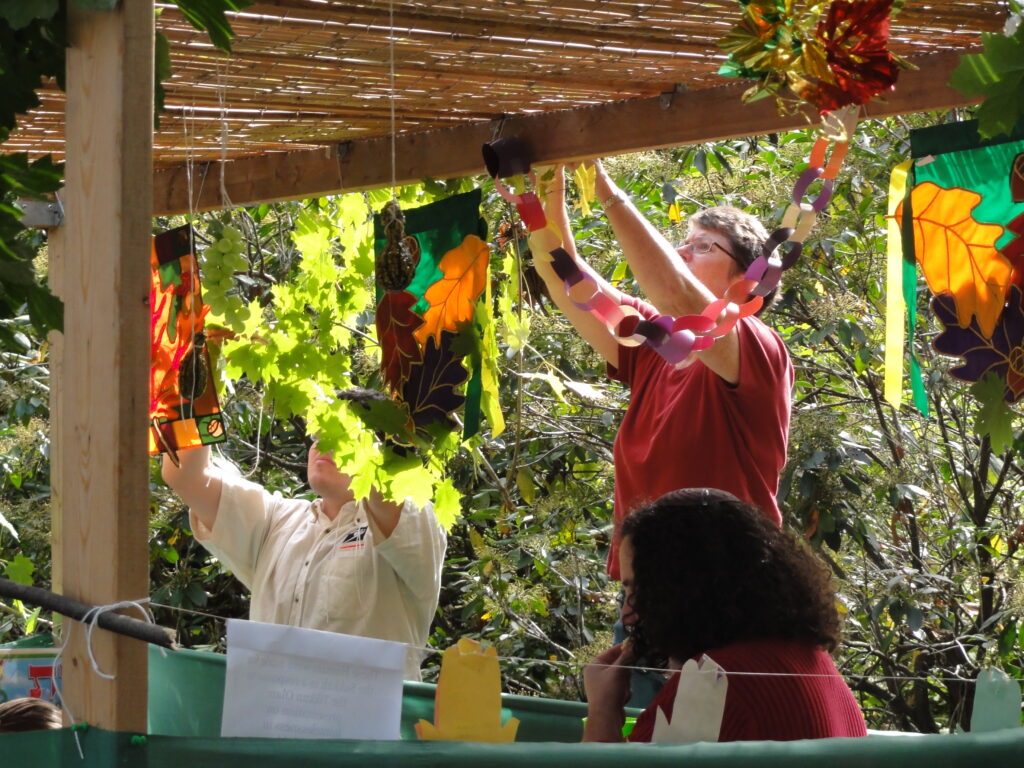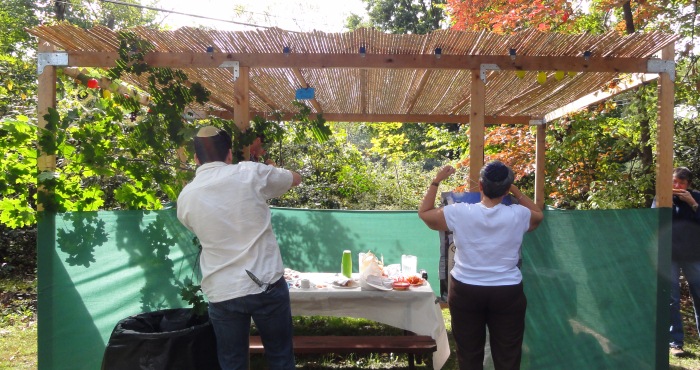First, you need the right tools.
A drill, some screws,
wood that isn’t warped
too badly. It doesn’t have to be perfect.
What doesn’t bend,
breaks, Ani crooned.
Next, you need a small crew.
Too many, you’re stepping on toes,
no one listens well.
Too small and it takes longer,
you’ll get crankier.
You need at least one other person
to hold things in place.
Now you’re ready to build.
There’s a sad sukkah on Beacon street:
Four plywood walls and a plywood roof.
It looks like a shipping crate.
There’s another on Commonwealth Avenue
that’s more plastic wrap than branches,
twigs, or flowers. Simple bamboo roof
they unroll year after year.
No sukkah should be quite the same
as someone else’s,
or as it was last year.
Why build four walls
when you only have to build three?
Be open to the elements,
let people in.
Would it be so bad
if a raccoon or a homeless person slept here?
When you shake the lulav and etrog
don’t forget to take in the sweet citrus smell.
Shake in all four directions,
use your whole body.













